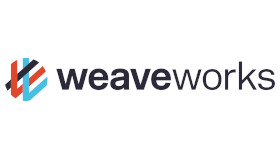Alexis Richardson, Founder and CEO of Weaveworks, embarked on a journey from a derivatives trader at Goldman Sachs to a tech entrepreneur advocating for Open Source. After founding Cohesive and RabbitMQ, he experienced success on the US West Coast, contributing to VM-Ware’s Cloud Foundry. In 2014, he established Weaveworks, focusing on Kubernetes container management and introducing GitOps. Despite being a UK based Open Source company, Weaveworks, with its international team and VC backing, faces challenges in visibility within the UK. Alexis emphasises the evolving perception of Open Source by UK investors and the crucial role of infrastructure tech in the Open Source landscape. Despite the trend of founders moving to the US, Weaveworks remains an anti-pattern, contributing to a global Open Source community while maintaining its UK base.
Alexis is Founder and CEO of the cloud native app deployment company and creator of GitOps, Weaveworks, with its HQ in London. The company swapped from the UK to a Delaware corporation on taking VC investment, now totalling $50m.
A Journey to Open Source
Alexis’ career started at Goldman Sachs as a derivatives trader, shifting to tech around 2001 as CEO of start-up, MetaLogic, building software to deliver front office applications for financial services and online gaming apps. Discovering Open Source through Finnish investors working with MySQL, he began to meet people working in Open Source in London. By 2004, it was clear that MetaLogic wouldn’t succeed and he set up a new company, Cohesive, to focus on delivering Open Source software products and take advantage of its transparency to allow buyers to see what your product does and give rapid feedback, which promotes technical sales.
Back in 2004 people needed support for their growing use of Open Source. Alexis built a support business model for Cohesive but initially didn’t get funding – at a similar time Red Hat was transitioning from being a Linux distribution to a support company, inventing the Subscription model for support. The economics of Open Source support are hard and it’s only profitable at scale. Cohesive built one of the first curated Open Source stacks.
At Cohesive, Alexis founded RabbitMQ in 2007 after identifying a ‘market gap’ in open source messaging products. RabbitMQ was based on AMQP – a new protocol from JPMorgan to address this need. RabbitMQ isn’t tied to a single language, meaning web apps developers using Ruby on Rails benefited from it equally as bankers building Java and .NET apps.
RabbitMQ customer adoption led Alexis to the US West Coast where he saw a different attitude – a sort of pioneering spirit plus pragmatism that worked really well for developing new software tools. He left Cohesive to focus full-time on RabbitMQ with Western European funding – it was almost impossible to get the US VCs to engage. Rabbit was acquired by VM-Ware in a middleware acquisition spree bringing Alexis into a division of VMware with a group of interested people, becoming the cloud application platform business unit – along with Redis, Spring and Tomcat – where they built Cloud Foundry. This rolled into the US company Pivotal spinning out of VMWare and EMC in 2013.
Deep Understanding of Open Source
Alexis left pivotal in 2014 founding Weaveworks using his experience of running several really
major Open Source projects and commercialising them in different ways. Containers were new so Weaveworks offered management and monitoring services for Container Application users, building Open Source projects around that. Weaveworks quickly evolved into one of the first companies providing software for Kubernetes container management, and then invented GitOps to deploy Kubernetes applications.
Alexis got involved in setting up the Cloud Native Computing Foundation (“CNCF”) and he co-wrote the original charter. While running Weaveworks as CEO he also served for 4 years as CNCF Technical Oversight Committee (“TOC”) Chair; he was followed as TOC Chair by the UK’s Liz Rice.
UK-Based International Open Source Company
Weaveworks is backed by international VC money. Alexis found this very different from previous initiatives, but Open Source projects find it difficult to scale a business without VC money. There are consequences of this and the business model turned out to be less straightforward than expected.
As a UK Open Source company with a UK operating HQ and US registered entity, Weaveworks is often forgotten in the UK’s internal fabric. Unlike traditional UK companies where MPs visit to ask them how they’re doing, Alexis says “we’re not considered British – despite Weaveworks in some ways having a bigger impact than these ‘UK companies’.” Like most Open Source businesses it’s positioned for sales purposes, as an international company, with most of its customers being US and its team is international and distributed – hired on skills not location.
Positioning yourself as a British company could be a bad idea if you want to attract people from around the world. Weaveworks has 100 folks across Egypt, the Far East, Canada, America, Mexico, South America, lots in Europe, but of course lots in the UK. “Every single person I talk to uses Open Source, it’s not something that is in question but how many of those users want help and support?”
There’s been a shift in UK investors who are now much more experienced, due to a generation of entrepreneurial exits, people coming through the system as it were and he sees up to 30 or 40 decent VCs, who understand what’s going on. That was not true in the past. They are willing to accept Open Source as part of a business model in a way that was tough to find 10 years ago. They understand this is an international space, they understand it’s got complications and nuances.
Open Source is our Digital Infrastructure
Infrastructure Tech is where you find Open Source companies at scale. Over time, fewer and fewer ad hoc people are involved in infrastructure because it becomes too difficult – like normal software delivery, like work. There’s a “phasing”: Phase One – very exciting, a new thing; Phase Two – not proven but starts to stabilise; and Phase three – non-exciting to the people who like new things but valuable to users with some value as a potential business. The challenges to make it sustainable are often answered by a vendor. Companies and people in the Infra space work on databases, message queues and in Weaveworks case a deployment orchestration engine (aka “gitops”).
As user adoption occurs, Open Source users have expectations of new features or security patches. If there’s a security issue in a library the infrastructure tool uses, a single volunteer maintainer might not be able to meet user expectations. Open Source today tends to self-organise into two structures, communities or commercial Open Source organisations. Each manages this differently.
UK engineers are good at software infrastructure – middleware which the American companies make but it’s not widely talked about or understood – the plumbing and plumbers’ tools for digital. Look at the annual UK awards for start-ups in the UK, they don’t even have a category for infrastructure technology and most good Open Source is infrastructure technology. The best UK Open Source companies today operate internationally with a foothold in the UK. The phenomenon of the founder moving to the US is a consistent pattern but Weaveworks worked as an anti-pattern and stayed. Contributors are global and there’s a separate world of Open Source. What’s challenging for the UK, is there aren’t many examples of successful Open Source companies despite a lot of great engineers being UK-based, good at infrastructure and hired across international companies.


